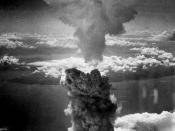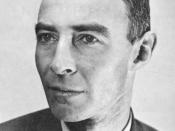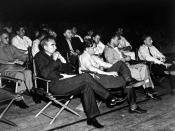In September of 1939 World War Two began in Europe with the invasion of Poland by Germany. Soon after Japan began to attempt to expand its borders with the invasion of Manchuria. Germany and Japan, along with Italy formed the central axis powers. Through misnegotiation and appeasement Adolf Hitler was allowed to gain more and more power until all out war was triggered. The United States Government's development of the atomic bomb was an important factor in bringing an end to World War Two. The development of the atomic bomb began in Rome in 1934 when the first atom was split, by August 6, 1945 the world had entered the nuclear age when the first atomic bomb was detonated in war over the Japanese city of Hiroshima. The United States path to the development of the nuclear bomb was referred to by president Truman as 'the greatest achievement of organized science in history'.(p.7
The History of the Atomic Bomb) The atomic bomb program led an interesting path from its roots in theoretical physics through its development to the decision to use the bomb against Japan to end the war.
In 1939 two German physicists, Otto Hahn and Fritz Strassmann, succeeded in splitting the nucleus of a uranium atom through neutron bombardment which resulted in an immense energy release for the amount of matter involved. Since the first atom had been split in Rome in 1934 scientists around the world began experimenting with neutron bombardment to split atoms. Due to the war in Europe many of the prominent nuclear physicists of the day fled to the United States and Great Britain. Enrico Fermi, Albert Einstein, Niels Bohr, Edward Teller, Leo Szilard, Rudolph Peierls, and Klaus Fuchs all sought refuge in the United States and Great Britain. Around 1935 fear was growing...


